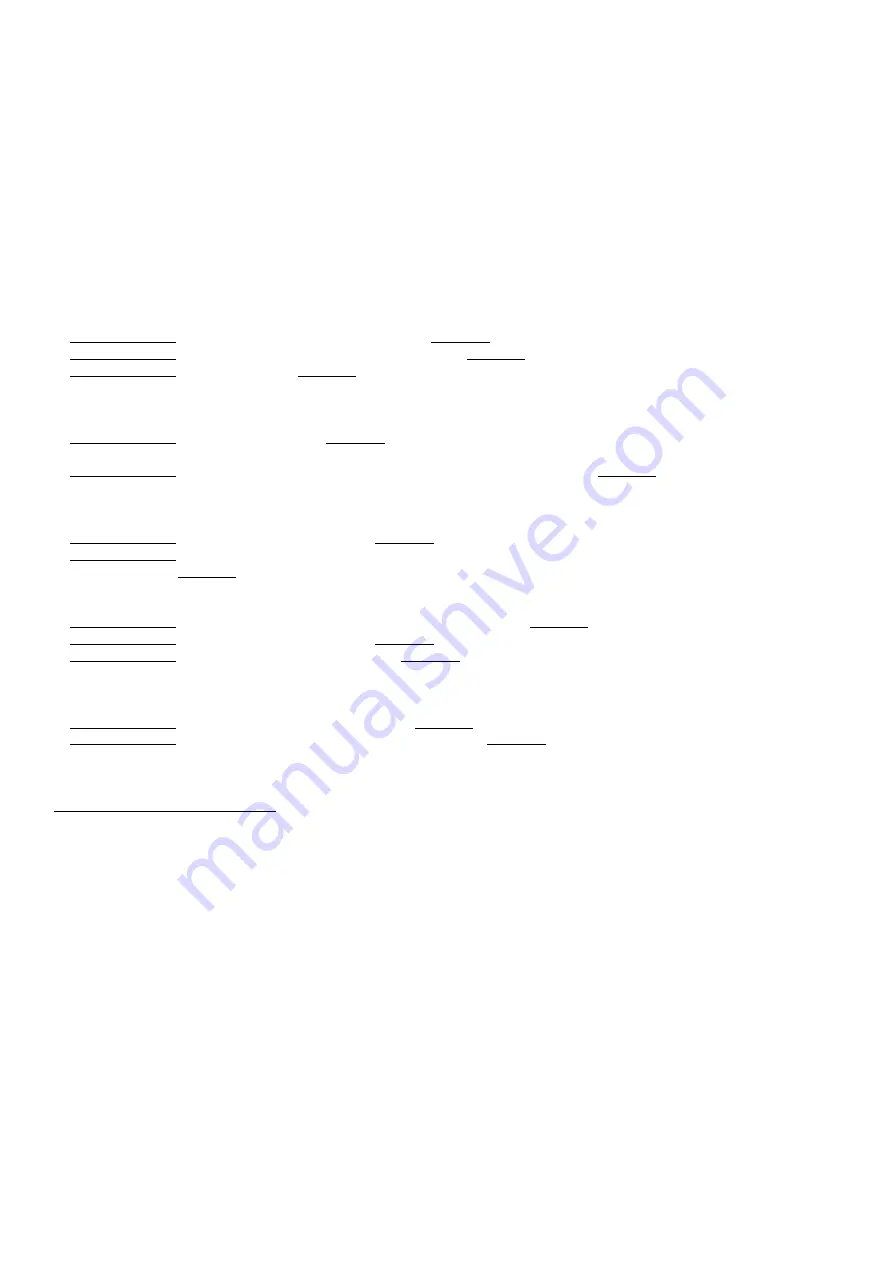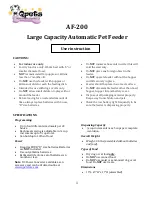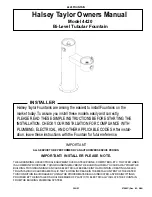
Maintenance and cleaning
Read the safety instructions and instructions carefully before opening the unit for maintenance. Maintenance should
only be performed on a current-less device. The lifting unit consists of a waste water container and a chopper with
pressure switch. Both areas are easily accessible through the cover. The maintenance access points are marked on
the top of the lifting unit. The maintenance and repair of the device is so comfortably possible.
Removal of foreign bodies and blockages
1.
Disconnect the mains cable.
2.
Unscrew the cap with the pump symbol (upper side of the lifting unit).
3.
Remove the
cap.
4.
Unscrew the cap of the chopping chamber.
5.
Turn and remove the chopping chamber cap.
6.
Remove clogging
parts (e.g., with pliers).
7.
When maintenance is complete, reassemble the unit using the reverse procedure.
Troubleshooting
Our devices are suitable exclusively for the disposal of faeces and toilet paper. Some small parts may still be pumped,
but larger parts may block the pump. This is the main reason for the incidents recorded by our customer service.
The device is working, but does not have enough power or works too slowly to transport the wastewater away.
1.
Possible cause: The drain pipe is too long or too high. Solution: Adjust the arrangement of the pipes.
2.
Possible cause: The diameter of the drain pipe is too small. Solution: Use a different pipe.
3.
Possible cause: A part is clogged. Solution: Start the pump with the manual switch button. If the problem persists,
the pump must be blocked.
The device is working, but a buzzing noise sounds, but the sewage is not being transported away.
1.
Possible cause: The pump is blocked. Solution: Check the pump impeller for blockage when the mains plug is
unplugged.
2.
Possible cause: The non-return valve has been mounted the wrong way round. Solution: Mount the non-return valve
in the correct direction.
The device is working, but is launched in unintended manner.
1.
Possible cause: The check valve is defective. Solution: Check the non-return valve.
2.
Possible cause: A leak in the cistern ensures that water flows into the lifting system and from time to time triggers the
transport process. Solution: Repair the cistern or water source.
The device is working, but runs permanently.
1.
Possible cause: The vertical outlet does not have a non-return valve. Solution: Mount a non-return valve.
2.
Possible cause: The check valve is defective. Solution: Check the non-return valve and replace the defective valve.
3.
Possible cause: The pressure switch is defective. Solution: Check the pressure switch – a pressure switch that is wet
or full of water is defective – the line to the pressure switch must be dry.
The device is working, but there is no humming sound.
1.
Possible cause: The power connection is defective. Solution: Check the power connection.
2.
Possible cause: Pressure switch or motor defective or blocked Solution: Check the current connection of the pressure
switch and the line of the pressure switch. Check the motor or pump impeller for blockage.
Detailed error descriptions and solutions
Residual water in the shower tray For the lifting unit to switch on cleanly when discharging waste water, the incoming
waste water pipe should have a gradient of at least 2–3 % and a height difference of at least 20 cm from the siphon to
the inlet to the lifting unit. This is both necessary for the pressure switch in the toilet lift to work properly, turn on the lift
and pump out the water. Possible faults, if this is not considered, are that the lifting unit does not pump the water out or
that there is always too much left in the pipes or possibly in the shower tray. Loud noises, motor does not start or starts
heavily, water is not pumped out. These symptoms occur when the lifting system is blocked. If the system is clogged
with toilet paper and faeces, in most cases it is sufficient to carefully flush the system backwards with water. To do this,
simply apply a little water pressure to the outlet of the lifting unit, e.g., with a garden hose, so that the residues from the
pump body are flushed back into the lifting unit. Please make sure that there is no water pressure on the collecting tank
of the lifting unit. Otherwise, the pressure switch of the lifting unit will be damaged and the automatic on/off switch will
no longer function correctly. In the case of heavy blockages/blockages caused by solids which have jammed in the
pump body, it may be necessary to open the pump so that the solids can be removed. Strong impacts from the solids in
the lifting unit may even damage the motor bearings. In this case, the motor of the lifting unit must be opened and the
bearing replaced. This fault usually manifests itself after the removal or rinsing out of larger solids. The lifting unit can
then still be turned freely by hand, but as soon as you try to start the engine, it blocks and only hums. Cleaning can
easily be done through the maintenance opening on the top of the lifting unit. Lifting unit does not pump down and is in
continuous operation This error occurs in lifting systems that were switched off (no power) and still had inlet, or where
sewage was discharged under pressure from a dishwasher or washing machine, or that had more inlet than the pump
could pump out. As a result, the systems were “overfilled.” It can then happen that water gets into the pressure switch
of the lifting unit. This disturbs the function of the pressure switch. The system then either runs continuously or no
longer switches on automatically. Cleaning the unit The lifting unit may only be cleaned from the outside with mild
detergents, a damp cloth and soapy water. Damage caused by incorrect cleaning agents is not covered by the warranty.























